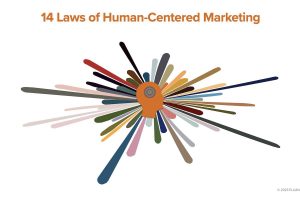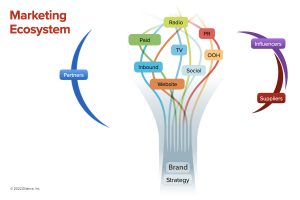
The goal of marketing is to win the hearts, minds and trust of people. If you win them over, you might win their business too. I hope you find these laws beneficial.


The goal of marketing is to win the hearts, minds and trust of people. If you win them over, you might win their business too. I hope you find these laws beneficial.

Marketing, like ecology, is a complex ecosystem of reciprocal relationships thriving in a network of mutuality. Parts grow, interdependence begins and symbiotic relationships form. It adapts to each new season.

Great marketers are a rare breed. They are shapeshifters who play these ten crucial roles and gracefully switch between them.

Companies and institutions with out-dated or poorly executed identities need to be aware of the perception their identity has in the markets they serve.

Most people draw a clear line between conventional marketing of products and services, and social marketing, which broadly defined applies marketing principles to change human behavior in order to improve health or benefit society. But what happens when you bring a social issue forward that almost nobody knows even exists — one that goes to […]

What are the key ingredients of marketing success in 2014?

I love ROI. You can probably tell from my Twitter handle: @LuvROI. Yet, we marketers don’t often push our metrics far enough to effectively measure ROI. I’m not talking about impressions, frequency, clicks and other traditional campaign measurements. Not at all. Rather, we should view marketing outcomes through the same revenue-focused lens used by senior […]

Does higher education branding actually help prospects and parents make sound choices?

If done right, SEO will literally outlive your website. On the internet, we don’t often think of our media as having any intrinsic permanent value. News headlines are expired within minutes; tweets are gone in a flash. Blogs squabble and compete for our momentary attention before disappearing again into obscurity. Even websites rarely stand the […]

During these times when consumers tend to ignore billboard ads, block telemarketing calls, and fast forward through television commercials, inbound marketing is a hot topic. Tactics typically categorized as inbound marketing are ones that encourage interested prospective customers to come to you, as opposed to simply purchasing their attention through advertising and other methods of […]